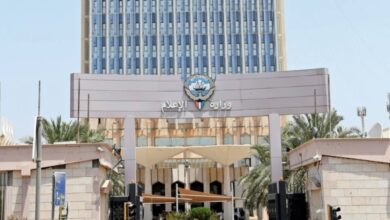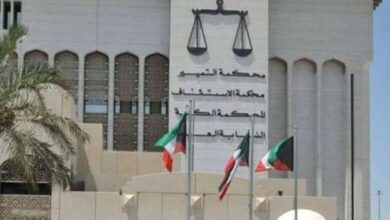Killing Journalists in Crises and Conflict Zones Curtails Information Corrodes Freedom

THE TIMES KUWAIT REPORT
Figures from the ‘Observatory of Killed Journalists’, compiled by the United Nations Educational Scientific and Cultural Organization (UNESCO), shows that since 1993, 1,761 journalists have been killed for reporting the news and bringing information to the public; this works out to one journalist killed every week, every year for the past 30 years. In nine out of ten such cases, the perpetrators go unpunished due to prevailing impunity for this crime in many parts of the world.
[For clarification purposes, throughout this article, the term ‘journalist’ is used to represent professional journalists as well as all media personnel, including news photographers and social media producers, engaged in journalistic activity.]Sadly, the killing of journalists continues unabated, with the latest update from the UNESCO observatory showing that the number of journalists killed so far this year has crossed 61. This muzzling of media is reiterated by Reporters sans Frontières (RSF), the Paris-based international organization that focuses on safeguarding and promoting access to free and reliable information. RSF notes that besides the growing number of journalists killed so far this year, an additional 603 journalists were detained by the authorities worldwide.
As the RSF points out, the right to accurate and timely information is critical to know, understand, and to form opinions; it is also a precursor to addressing and taking action on issues, both individually and collectively. Killing journalists curtails the veracity of information available to the public, represses opinion, and corrodes freedom of expression.
International Day of Ending Impunity for Crimes Against Journalists (IDEI), observed every year on 2 November, is an occasion to commemorate the memory of media people killed in the line of duty; highlight the risks that they face while undertaking their job; call for accountability for crimes committed against them; and reaffirm commitment to the protection and safety of journalists everywhere.
The annual IDEI observance is also a reminder to UN Member States of their obligation to do more to prevent violence against journalists, as well as to ensure accountability, bring to justice perpetrators of crimes against journalists, and ensure that victims have access to appropriate remedies. The day also enjoins States to promote freedom of expression and right to information, as well as provide a safe and enabling environment for journalists to perform their work independently and without undue interference.
Although the killing of journalists is considered the most extreme and egregious form of media censorship, their silencing is only the visible tip of the huge iceberg of methods used to squash information reaching the public. Extrajudicial killings, torture, enforced disappearances and arbitrary detention, as well as intimidation and harassment, both offline and online, and denying access to journalists to reporting sites, are increasingly becoming the norm in many places.
With nine out of ten killings of journalists going unpunished, the impunity prevailing in many countries for such crimes, also emboldens perpetrators and perpetuates a climate of violence against media personnel. Ending impunity for crimes against journalists is an essential precondition to guarantee freedom of expression and access to information for people everywhere.
In particular, journalists reporting from crisis- and conflict-zones face severe and disproportionate threats in carrying out their work. Many are detained, harassed, expelled or forced to flee and cease their work, which risks turning conflict areas into vast ‘zones of silence’ that limit the ability of UN agencies and the international community to prevent atrocities, protect victims, and prosecute perpetrators.
UNESCO records show that in 2023 more than 50 percent of journalist killings occurred in crisis- and conflict-zones. Considering the increasing number and intensity of conflicts and crises occurring around the world, the theme and focus of this year’s IDEI is, ‘Safety of Journalists in Crises and Emergencies’. The day also promotes a wider discussion on the safety of journalists and ending impunity for crimes against them.
The first concerted efforts at the UN to address attacks and end impunity of crimes against journalists came in June 2012 with the launch of the UN Plan of Action on the Safety of Journalists. The plan, initiated by UNESCO and endorsed by the UN Executive Board, was later approved by the UN General Assembly and the Human Rights Council. Among others, the document stresses the need to create a free and safe environment for journalists, both in conflict and non-conflict areas.
The UN plan includes raising awareness, setting standards and policies, building capacity, and monitoring, reporting, and researching crimes against journalists and the impunity for these crimes. The plan, which involves various UN agencies, is actioned through a holistic approach that involves cooperation with government authorities to develop necessary legislative frameworks and other mechanisms to protect freedom of expression and information. The plan also promotes awareness initiatives and fosters partnerships with civil society organizations and media.
Every two years, the awareness raising campaign that commemorates IDEI coincides closely with the release of a report by the UNESCO Director-General, which outlines the current status of crimes against journalists, and the impunity that prevails for such acts. The report is considered a key international instrument for the monitoring of journalist killings everywhere, and for recording the prevailing global and regional impunity for such crimes.
The UNESCO Director-General’s Report on the Safety of Journalists and the Danger of Impunity in 2024, is expected to be released on 21 November. An early version of the report available online, presents a chilling picture of the ongoing violence against journalists worldwide. The report shows that over the reporting period from 1 January 2022 to 31 December 2023, the UNESCO Observatory on Killed Journalists recorded 162 killings of journalists—the equivalent of one journalist killed every four days over the previous two-year period.
This sobering figure marked a 38 percent increase from the previous 2020-21 biennium report in which UNESCO recorded 117 killings. The rise in deaths during 2022-23 has been attributed mainly to the increase in the number of killings in conflict countries, which climbed to 44 last year from the 30 in 2022. Even in countries not experiencing armed conflict, there was a significant spike in journalist killings, with 60 killings reported in 2022, which was the highest number ever recorded by UNESCO. The killings then fell to 30 in 2023, the lowest since 2008.
The report also shows that over the 2022-2023 biennium the highest number of killings took place in Latin America and the Caribbean (61), followed by the Arab States where 35 killings were recorded. Women journalists killed in the line of duty represented 9 percent of killings with14 cases, consistent with the previous biennium, but the number of women journalists killed in 2022 in particular was the highest since 2017.
Although the rate of impunity for killing journalists has come down from the 95 percent in 2012, it still remains high at 85 percent in 2024; in other words, only 15 percent of judicial inquiries into journalist killings since 2006 have been resolved by 2024. The high rate of impunity and increasing crimes against journalists that persist more than a decade after the UN launched its Plan of Action, indicates that the world needs to redouble efforts to ensure accountability for such crimes and enhance prevention and protection for journalists everywhere.
Persisting impunity and increasing attempts to prevent journalists from providing accurate information to the public, by harassing, threatening, detaining, or even killing them, not only harms media people and their families, it also eventually leads to an uninformed public and silenced societies, which is inimical to the growth of democracies and to sustainable development worldwide.












